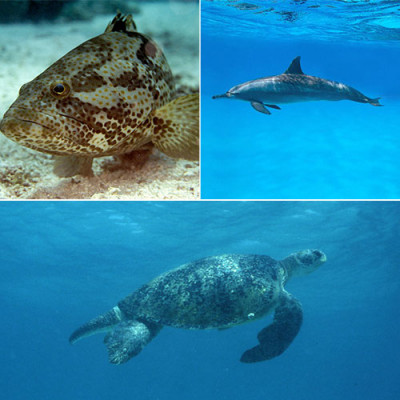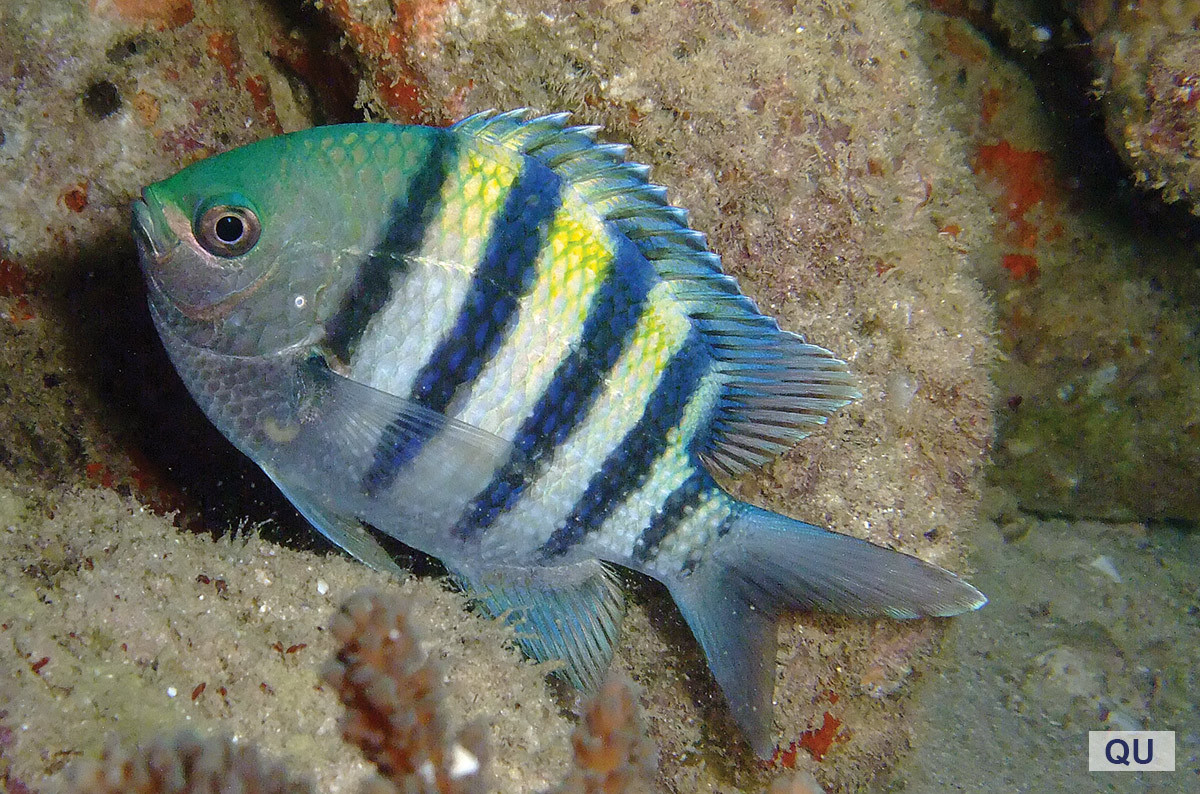Name: Indo-Pacific Sergeant
Local name: Ge'easi
Scientific name: Abudefduf vaigiensis
Classification: Class: ray-finned fishes; Order: perch-likes; Family: damselfishes (Pomacentridae)
Synonym: Abudefduf saxatilis
Size: It attains a maximum length of 18 cm.
Habitat:
Adults usually occur near the upper edge of reef slopes, often in aggregations feeding at midwater on zooplankton. They also feed on benthic algae and small invertebrates. Juveniles are associated with drifting seaweed. The Indo-Pacific Sergeant occurs in large numbers at spawning sites, timed with large tides that carry their pelagic offspring far offshore. The species is oviparous with distinct pairing during breeding. Eggs are demersal, adhere to the substrate and are guarded and aerated by the male.
Distribution:
The species is widespread in the tropical Indo-Pacific, from the Red Sea and eastern Africa in the west, to the Tuamoto islands in the east, north to Japan, and south to Australia.
Conservation status:
It has not yet been assessed globally by the IUCN Red List of Threatened Species. In a recent regional assessment for the Arabian Gulf it was classified as Vulnerable (VU). The species is important for the aquarium trade.
Description:
The body is moderately deep and compressed; the mouth small and terminal. The caudal fin is forked. The background color of the body is greenish grey often suffused with yellow dorsally, and grading to greenish white ventrally. Edges of scales are darker than their centers. There are five deep blue to black bars on the body, narrowing ventrally. Fins are mainly blue-green and translucent.








